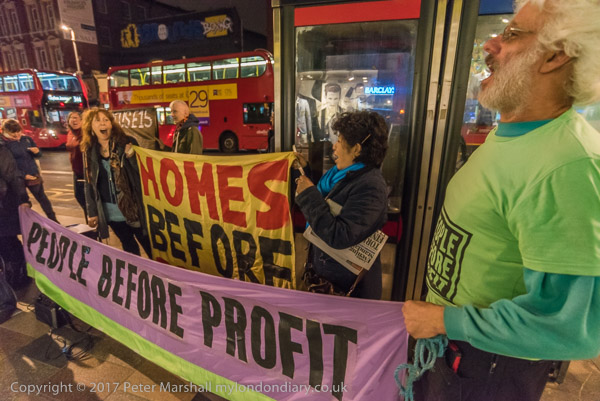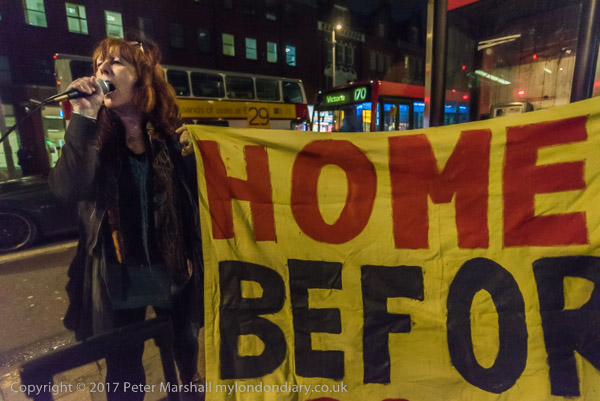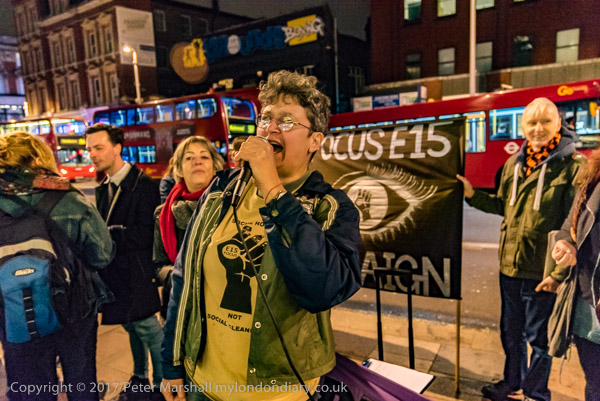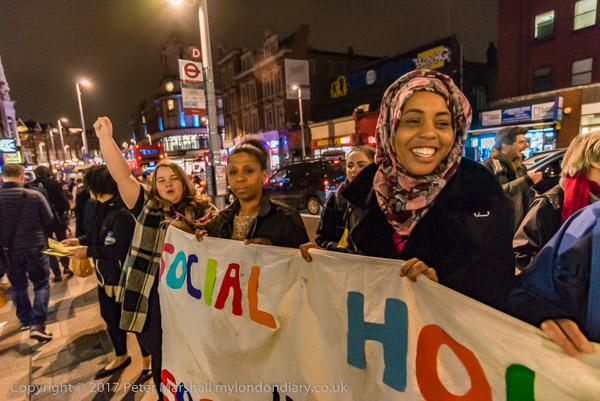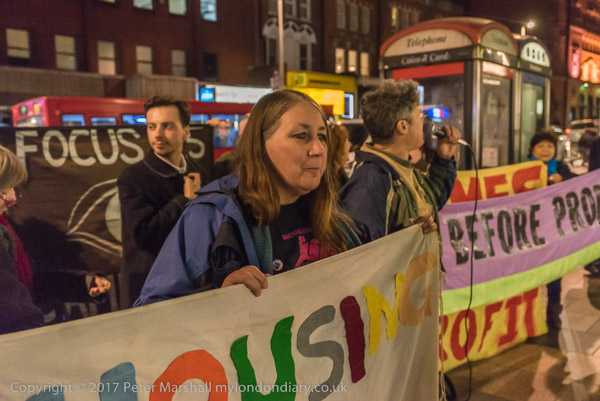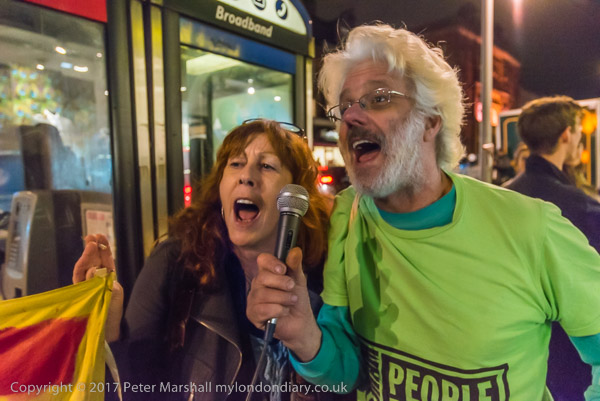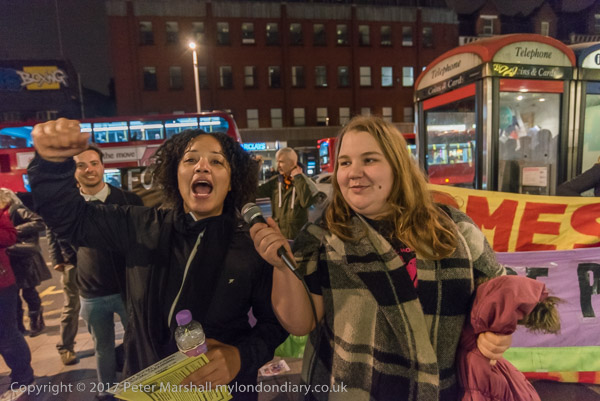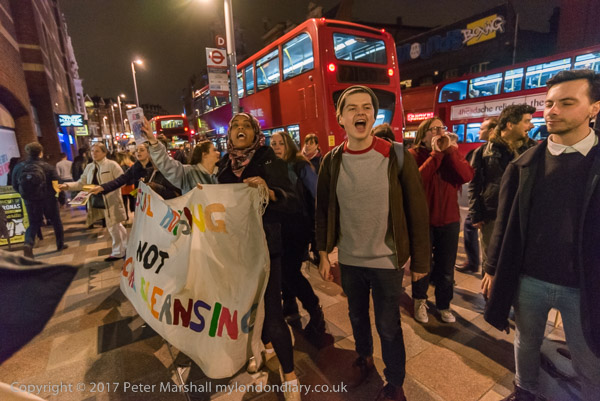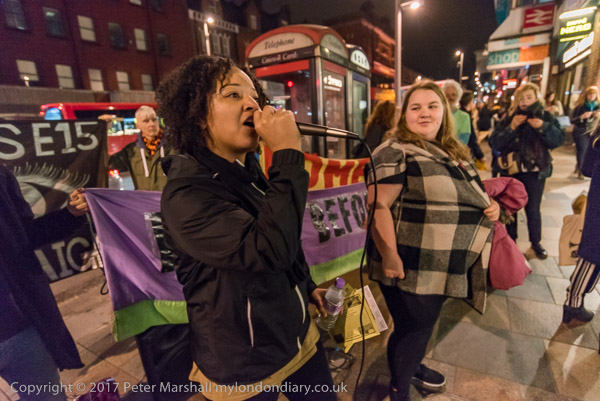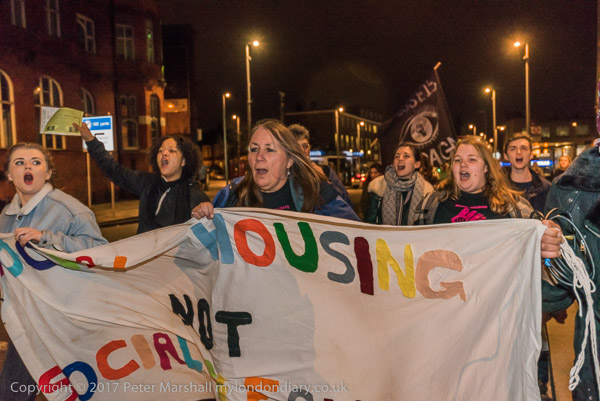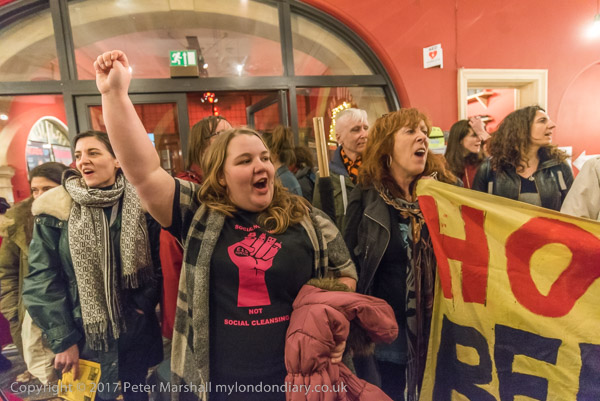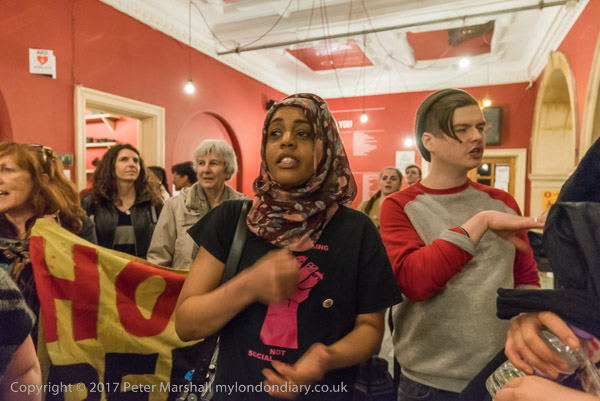Lavender Hill & Wandsworth Rd: On Sunday 28th May 1989 I again took the train to Clapham Junction, with time for a rather longer walk than I had made the previous day.
A short walk up Lavender Hill from the station brought me to Altenburg Gardens and this remarkable Grade II listed ‘Arts and Crafts’ Reference Library. Initial designs by Borough Surveyor 1924 T W A Hayward were treated to considerable improvements by his architectural assistant Henry Hyams who was appointed in January 1924 and was responsible for the unusual building we see today.
Hyams was – as the Survey of London at UCL Bartlett suggests “an obscure but intriguing figure, who had spent time in central Europe in the Edwardian decade before settling in Devon. He had advanced views – Esperanto, theosophy – perhaps atypical of a Hackney publican’s son, and had spent time in Wandsworth jail during the First World War for his trenchant pacifism”. His rather eclectic “Arts and Crafts” design came well after the style had gone out of fashion and included some unusual decoration as well as the Council’s motto ‘ NON MIHI, NON TIBI, SED NOBIS’ (Not for Me, Not for You, But for Us) over the main doorway.
Altenberg Gardens had been developed in the late 1880s, and has some substantial late Victorian housing but I didn’t continue along it to photograph these but returned to Lavender Hill.
The reference library was an extension linked to the main Battersea Central Library on Lavender Hill which had been built in 1889-90, shortly after Battersea had managed to gain its status as a separate vestry from Wandsworth.
Battersea Vestry held a competition for the building of the central Library and the winner was local architect Edward Mountford who had submitted the only design of ten submissions that was within the Vestry’s budget of £6,000.
Edward Mountford went on to win a further competition against designs by another 11 architects to design a new town hall for the Vestry of St Mary Battersea which was erected in 1891-3 and continued to serve the local authority until 1965. Here the budget was considerably larger and it shows in this Grade II* building, which according to the listing text has “Relief sculpture by Paul R Montford. Decorative plasterwork by Gilbert Seale of Camberwell. Mosaic floors by the Vitreous Mosaic Co, Battersea.“
This is the Grand Hall Entrance on Town Hall Road, of which I made several pictures. The design was described by Mountford as ‘essentially English Renaissance, though perhaps treated somewhat freely’. And it had included this separate entrance on the east side to the large public hall at the rear of the building. There are detailed descriptions of the building in the Survey of London on the UCL Bartlett School of Architecture site.
When Battersea became again united with Wandsworth in the London Borough of Wandsworth in 1965, this building was made redundant. Wandworth’s plans to demolish much of it were defeated by a public campaign by the Victorian Society and Battersea Society and it was Grade II* listed in 1970. It became a community arts centre in 1974 and despite a major fire in 2015 which required extensive rebuilding continues in use as Battersea Arts Centre. I appeared briefly on stage there in 2017 in a after-performance panel discussion ‘Art & Accidental Activism’ after a Lung Theatre performance of ‘E15’.
This whole section of Lavender Hill including the scrap metal merchants Chase Metals at 92 has been demolished. There is a building dating from 2015 at 100 Lavender Hill but nothing on the street between this an No 66 except a hedge in front of the five storey housing blocks on Wandsworth’s Gideon Road Estate.
I walked to the end of Lavender Hill and continued along Wandsworth Road, walking a short distance down Lambourn Road to photograph these houses before returning to Wandsworth Road. This road was laid out at the start of large scale development of the area in the 1860s by Eken and Williams and the houses this terrace are larger than most with three storeys and a basement.
I liked the steps up in the roofline, partly with an extra storey but also as the houses go up the hill, as well as the repeated decoration abouve the windows and doors.
The Hibbert Almshouses were built in 1859 to provide accommodation for older women from the Ancient Parish of Clapham, commissioned by Sarah and Mary Ann Hibbert, in memory of their father William Hibbert, a long-term resident of Clapham.
The Hibbert Almshouse Charity was established in 1864 to take over the running from the sisters and still manages the buildings for their orginal purpose, although married couples and single men of the appropriate age are now also accepted as residents – though preference is given to women if there is more than one applicant when a house falls vacant.
The architect of these Grade II listed almshouses was Edward I’Anson and the building is largely unchanged although bathrooms were added in the 1960s. The charity is currently raising funds for a manor renovation and donations are welcome.
The account of my walk will continue in a later post.







